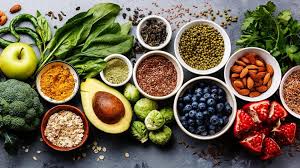25 Smart Ways on How to Save Money on Groceries in USA (2025 Guide for Families & Individuals)
Meta Description
How to Save Money on Groceries in USA – Discover 25+ practical tips to cut your grocery bills in 2025, from couponing and meal planning to cashback apps and bulk shopping.

📌 Comprehensive Outline
| Heading Level | Section Title |
|---|---|
| H1 | 25 Smart Ways on How to Save Money on Groceries in USA (2025 Guide) |
| H2 | Introduction: Why Grocery Prices Are Rising in 2025 |
| H2 | 1. Make a Weekly Meal Plan Before Shopping |
| H2 | 2. Create and Stick to a Shopping List |
| H2 | 3. Buy in Bulk for Non-Perishable Items |
| H2 | 4. Use Store Loyalty Programs |
| H2 | 5. Take Advantage of Digital Coupons |
| H2 | 6. Shop at Discount Grocery Stores |
| H2 | 7. Compare Unit Prices Instead of Package Prices |
| H2 | 8. Choose Store Brands Over Name Brands |
| H2 | 9. Use Cashback Apps and Credit Cards |
| H2 | 10. Avoid Shopping When Hungry |
| H2 | 11. Freeze Leftovers and Extra Produce |
| H2 | 12. Cook More Meals at Home |
| H2 | 13. Buy Seasonal Fruits and Vegetables |
| H2 | 14. Reduce Food Waste with Proper Storage |
| H2 | 15. Shop Once a Week to Avoid Impulse Buying |
| H2 | 16. Use Rebate and Price-Matching Policies |
| H2 | 17. Join Warehouse Clubs like Costco & Sam’s Club |
| H2 | 18. Grow Your Own Herbs and Vegetables |
| H2 | 19. Shop Farmers’ Markets Before Closing Hours |
| H2 | 20. Take Advantage of Holiday & Weekly Sales |
| H2 | 21. Buy Frozen Instead of Fresh (When Cheaper) |
| H2 | 22. Cook in Batches & Use Meal Prep |
| H2 | 23. Limit Processed and Packaged Foods |
| H2 | 24. Track Your Monthly Grocery Spending |
| H2 | 25. Involve the Whole Family in Saving Strategies |
| H2 | FAQs |
| H2 | Conclusion |
Introduction: Why Grocery Prices Are Rising in 2025
The average American household spends over $6,000 per year on groceries, and prices have continued to rise due to inflation, supply chain issues, and higher demand for fresh and organic items. In 2025, families are actively searching for ways to reduce grocery bills without sacrificing nutrition.
The good news? With smart shopping habits, planning, and the use of modern tools like cashback apps, you can save hundreds of dollars each month.
1. Make a Weekly Meal Plan Before Shopping
Planning meals in advance ensures you buy only what you need. It reduces food waste and prevents impulse purchases.
Example: Plan five dinners, two lunches, and a few snacks for the week. Stick to those recipes when shopping.
2. Create and Stick to a Shopping List
A shopping list keeps you focused. Studies show shoppers who use a list save up to 25% compared to those who don’t.
Pro tip: Use apps like AnyList or Google Keep to create digital lists.
3. Buy in Bulk for Non-Perishable Items
Items like rice, pasta, canned goods, and paper products are cheaper when bought in larger quantities.
Warehouse clubs like Costco and Sam’s Club are excellent for this strategy.
4. Use Store Loyalty Programs
Most US supermarkets offer free loyalty programs. These programs provide exclusive discounts, digital coupons, and cashback points.
Examples: Safeway, Kroger, and Publix loyalty cards.
5. Take Advantage of Digital Coupons
Gone are the days of paper coupons. Today, you can load coupons directly onto your loyalty card or use apps like:
- Ibotta
- Rakuten
- Coupons.com
6. Shop at Discount Grocery Stores
Stores like Aldi, Lidl, and Dollar General offer groceries at 20–40% lower prices than traditional supermarkets.
7. Compare Unit Prices Instead of Package Prices
Don’t be fooled by “family size” packaging. Always check the unit price per ounce or pound to find the real bargain.
8. Choose Store Brands Over Name Brands
Generic or store-brand products often cost 20–30% less but have the same quality.
Example: Walmart’s “Great Value” or Target’s “Good & Gather.”
9. Use Cashback Apps and Credit Cards
Cashback apps and grocery credit cards give you money back on purchases.
Examples:
- Chase Freedom Flex (5% cashback on groceries during bonus periods)
- Ibotta & Fetch Rewards apps
10. Avoid Shopping When Hungry
Studies show shopping hungry increases impulse buys by up to 64%. Eat a snack before going to the store.
11. Freeze Leftovers and Extra Produce
If you can’t finish fresh produce, freeze it before it spoils. Frozen bananas, spinach, and berries are great for smoothies.
12. Cook More Meals at Home
Home-cooked meals cost a fraction of takeout. Preparing your own lunches saves $30–$50 per week.
13. Buy Seasonal Fruits and Vegetables
Seasonal produce is cheaper and fresher. For example, buy strawberries in summer instead of winter.
14. Reduce Food Waste with Proper Storage
Use airtight containers, freezer bags, and fridge organizers to extend food life.
15. Shop Once a Week to Avoid Impulse Buying
Frequent shopping trips lead to unplanned purchases. Limiting to one trip per week saves money and time.
16. Use Rebate and Price-Matching Policies
Some stores match competitor prices. Keep an eye on weekly flyers and ask for a price match at checkout.
17. Join Warehouse Clubs like Costco & Sam’s Club
Paying an annual fee can still save you hundreds if you buy regularly in bulk.
Best for families and shared households.
18. Grow Your Own Herbs and Vegetables
Even a small garden or balcony setup can save on herbs like basil, parsley, and mint.
19. Shop Farmers’ Markets Before Closing Hours
Vendors often offer discounts at the end of the day to clear stock.
20. Take Advantage of Holiday & Weekly Sales
Stock up on non-perishables during holiday promotions and weekly sales cycles.
21. Buy Frozen Instead of Fresh (When Cheaper)
Frozen veggies and fruits are just as nutritious and last longer.
22. Cook in Batches & Use Meal Prep
Batch cooking saves time and ensures you don’t overspend mid-week. Store portions in the freezer.
23. Limit Processed and Packaged Foods
Snacks, sodas, and ready meals are costly. Focus on whole foods like rice, beans, and vegetables.
24. Track Your Monthly Grocery Spending
Use budgeting apps like Mint or YNAB to track expenses. Awareness leads to better control.
25. Involve the Whole Family in Saving Strategies
Teach kids to compare prices, look for deals, and avoid waste. Saving money becomes a family habit.
FAQs
1. What’s the best grocery app in the USA for saving money?
Ibotta, Fetch Rewards, and Rakuten are among the most popular apps for cashback and discounts.
2. How much can I realistically save per month?
With consistent effort, families can save $200–$400/month on groceries.
3. Is it cheaper to shop online for groceries?
Yes, sometimes. Online stores like Walmart+ and Amazon Fresh offer free delivery and digital coupons, which may save more.
4. Which stores have the cheapest groceries in the USA?
Aldi, Walmart, and Costco are among the cheapest options nationwide.
5. Is buying organic food worth the price?
Not always. Buy organic for the “Dirty Dozen” produce (like strawberries, spinach), but stick with conventional for others.
6. How can I avoid wasting food at home?
Plan meals, store properly, and freeze leftovers to cut food waste by 30–40%.
Conclusion
Learning how to save money on groceries in the USA doesn’t mean sacrificing healthy meals. With strategies like meal planning, digital coupons, cashback apps, and shopping smart at discount stores, you can slash grocery bills while still enjoying nutritious food.
By applying even a few of these 25 tips, you’ll notice a big difference in your monthly budget—and that extra cash can go toward savings, investments, or family fun.










Post Comment